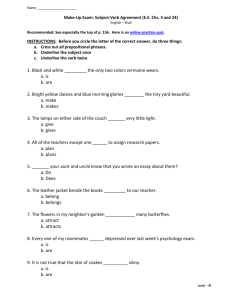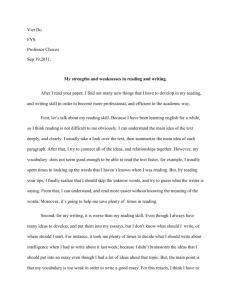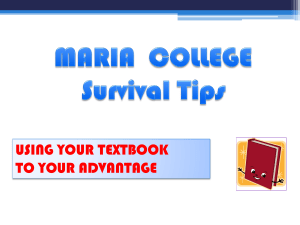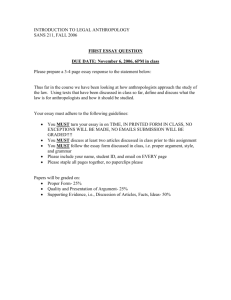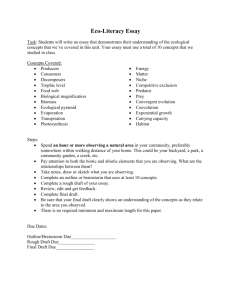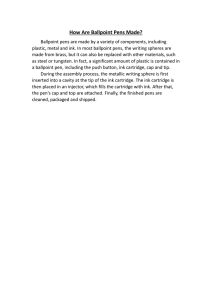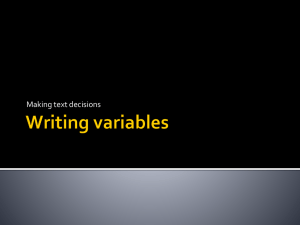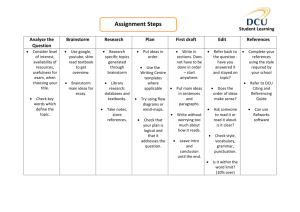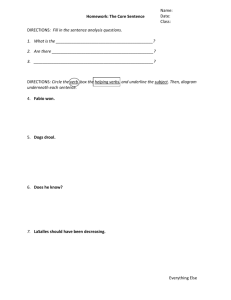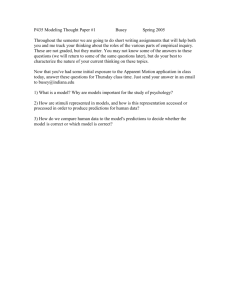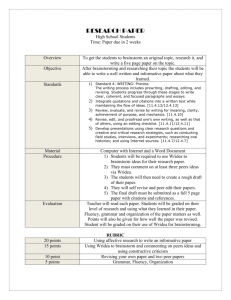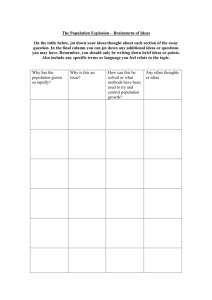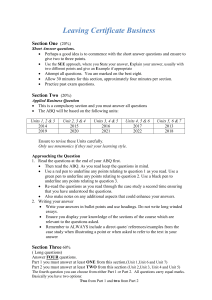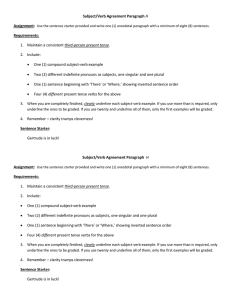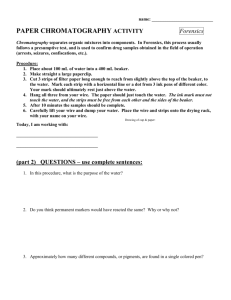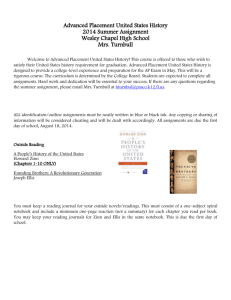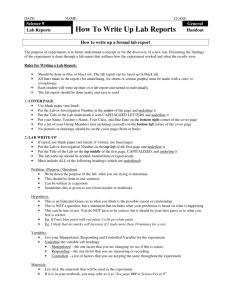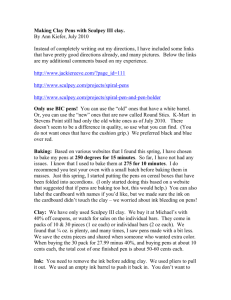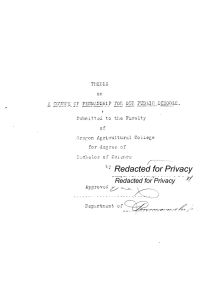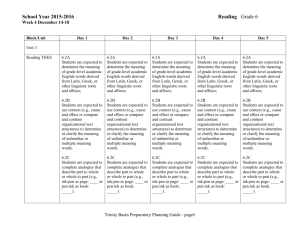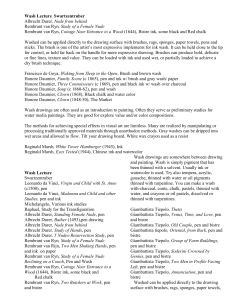HOW TO ATTACK A FREE RESPONSE QUESTION
advertisement
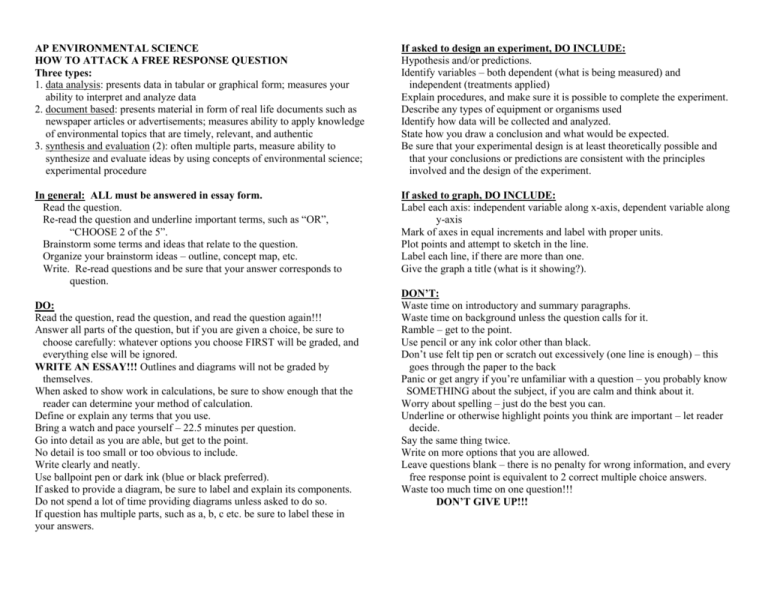
AP ENVIRONMENTAL SCIENCE HOW TO ATTACK A FREE RESPONSE QUESTION Three types: 1. data analysis: presents data in tabular or graphical form; measures your ability to interpret and analyze data 2. document based: presents material in form of real life documents such as newspaper articles or advertisements; measures ability to apply knowledge of environmental topics that are timely, relevant, and authentic 3. synthesis and evaluation (2): often multiple parts, measure ability to synthesize and evaluate ideas by using concepts of environmental science; experimental procedure If asked to design an experiment, DO INCLUDE: Hypothesis and/or predictions. Identify variables – both dependent (what is being measured) and independent (treatments applied) Explain procedures, and make sure it is possible to complete the experiment. Describe any types of equipment or organisms used Identify how data will be collected and analyzed. State how you draw a conclusion and what would be expected. Be sure that your experimental design is at least theoretically possible and that your conclusions or predictions are consistent with the principles involved and the design of the experiment. In general: ALL must be answered in essay form. Read the question. Re-read the question and underline important terms, such as “OR”, “CHOOSE 2 of the 5”. Brainstorm some terms and ideas that relate to the question. Organize your brainstorm ideas – outline, concept map, etc. Write. Re-read questions and be sure that your answer corresponds to question. If asked to graph, DO INCLUDE: Label each axis: independent variable along x-axis, dependent variable along y-axis Mark of axes in equal increments and label with proper units. Plot points and attempt to sketch in the line. Label each line, if there are more than one. Give the graph a title (what is it showing?). DO: Read the question, read the question, and read the question again!!! Answer all parts of the question, but if you are given a choice, be sure to choose carefully: whatever options you choose FIRST will be graded, and everything else will be ignored. WRITE AN ESSAY!!! Outlines and diagrams will not be graded by themselves. When asked to show work in calculations, be sure to show enough that the reader can determine your method of calculation. Define or explain any terms that you use. Bring a watch and pace yourself – 22.5 minutes per question. Go into detail as you are able, but get to the point. No detail is too small or too obvious to include. Write clearly and neatly. Use ballpoint pen or dark ink (blue or black preferred). If asked to provide a diagram, be sure to label and explain its components. Do not spend a lot of time providing diagrams unless asked to do so. If question has multiple parts, such as a, b, c etc. be sure to label these in your answers. DON’T: Waste time on introductory and summary paragraphs. Waste time on background unless the question calls for it. Ramble – get to the point. Use pencil or any ink color other than black. Don’t use felt tip pen or scratch out excessively (one line is enough) – this goes through the paper to the back Panic or get angry if you’re unfamiliar with a question – you probably know SOMETHING about the subject, if you are calm and think about it. Worry about spelling – just do the best you can. Underline or otherwise highlight points you think are important – let reader decide. Say the same thing twice. Write on more options that you are allowed. Leave questions blank – there is no penalty for wrong information, and every free response point is equivalent to 2 correct multiple choice answers. Waste too much time on one question!!! DON’T GIVE UP!!!
